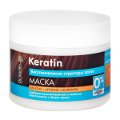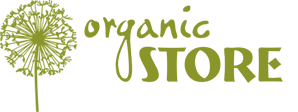 Lactic acid is arguably one of the most widely known and popular cosmetic ingredients. It is so versatile that you will find it in facial peels, anti-age face masks, anti-acne creams, shampoos and hair conditioners, and many other products. What exactly are the beauty benefits of lactic acid? Read on to learn more about its use in cosmetics.
Lactic acid is arguably one of the most widely known and popular cosmetic ingredients. It is so versatile that you will find it in facial peels, anti-age face masks, anti-acne creams, shampoos and hair conditioners, and many other products. What exactly are the beauty benefits of lactic acid? Read on to learn more about its use in cosmetics.
Lactic acid is an organic compound classified as an alpha-hydroxy acid (AHA). It is produced naturally by various strains of bacteria that ferment glucose, lactose, sucrose and other sugars. Lactic acid is used in the food industry as a natural preservative and acidifying agent. As a cosmetic ingredient, it is valued for its skin lightening, anti-inflammatory, moisturising, wound healing, and exfoliating properties.
Lactic acid has a wide range of skin and hair benefits. For example, it is able to bind water molecules and thus helps to retain moisture in the skin and hair, as well as to improve skin firmness and hair elasticity and flexibility. And thanks to its ability to break up the bonds between dead epidermal cells, lactic acid promotes natural skin exfoliation and renewal.
Lactic acid also contributes to the even distribution of melanin – a pigment responsible for skin colour, as well as slows down the synthesis of the enzyme responsible for the production of melanin. As a result, lactic acid has a pronounced skin lightening effect; it effectively combats unwanted pigmentation and evens out skin tone.
Lactic acid is also part of the so-called natural moisturising factor (NMF), and therefore it is very well accepted by the skin and easily penetrates into the deeper levels of the epidermis. Thanks to this, lactic acid has a positive effect on the sebaceous glands; it normalises the production of skin oil and prevents blackheads, pimples and acne breakouts.
Finally, lactic acid stimulates collagen synthesis, neutralises the harmful effects of free radicals, stimulates the regeneration of damaged skin, prevents inflammation, and relieves itchy and flaky skin. When used regularly, skincare products with lactic acid visibly improve complexion and make the skin soft, smooth and supple.
Today, lactic acid is widely used as a skincare ingredient. It can be found in various skin and hair care products, for example, in facial peels for at-home and professional use, where its concentration usually varies between 20 and 50 per cent. Since lactic acid is gentler and less aggressive than other AHAs, it is often used in chemical peels for dry, sensitive, and mature skin. This acid is also present in anti-age face serums, skin lightening creams, moisturisers for oily and problem skin, various toners and lotions, hair strengthening conditioners and masks, handmade soaps, etc.
The use of lactic acid in feminine hygiene products deserves a special mention. It is one of the common active ingredients in intimate washes because it has antiseptic and anti-inflammatory properties, as well as helps to maintain the normal flora of the intimate areas. Lactic acid contributes to gentle cleansing of the lady parts and helps to prevent inflammation and infections.
Skincare products with lactic acid are suitable for all skin types, including dry and sensitive skin. However, they do have their contraindications, such as rosacea. So if you have any long-term skin conditions, you should talk to your dermatologist or beautician before trying any new product with lactic acid, especially if it’s a chemical peel.
Products with Lactic Acid in Our Store
Dr. Sante Keratin Keratin Hair Mask, 300 ml |
